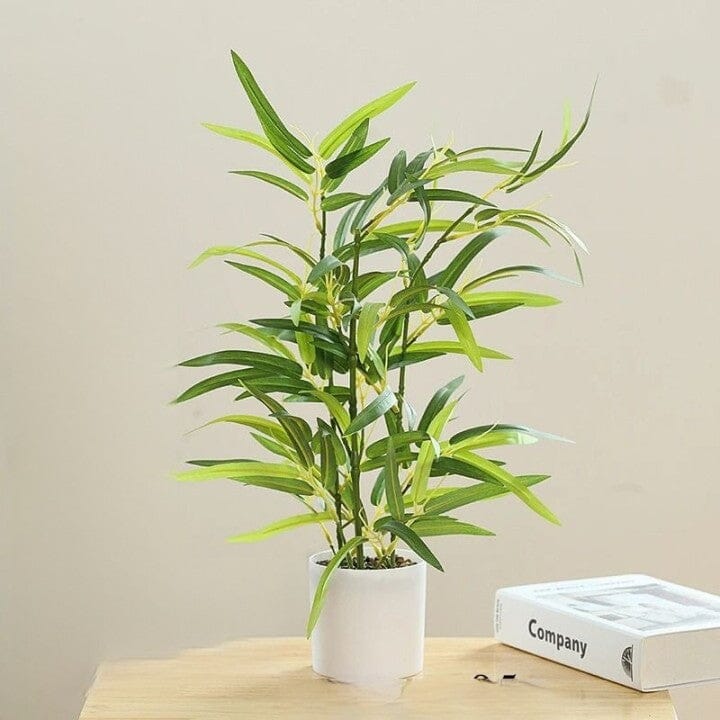Bamboo, a symbol of resilience and strength, harbors a fascinating mystery: its flowering. Rare and spectacular, it inspires wonder and raises many questions. Discover the captivating world of bamboo and the secrets of its unique bloom. 🎋

🌍 1. The Mystery of Bamboo Flowering
Bamboo flowering is one of the most mysterious phenomena in botany. Unlike other plants, bamboo can wait decades, even a century, before blooming. And when this happens, it's often on a global scale, with bamboos of the same species blooming simultaneously all over the world.
🎋 Amazing Synchronization
Bamboo follows a synchronized flowering cycle. No matter where it grows, if one bamboo plant begins to flower, all bamboo plants of the same species, whether in India, China, or South America, will flower at the same time. This phenomenon, called "gregarious flowering," is a fascinating scientific enigma.
🌟 Did you know? Some bamboos, such as Phyllostachys bambusoides , flower only every 120 years, and this synchronized flowering occurs even if the plants have been transported to different parts of the world.
🌱 Why is Flowering so Rare?
The rarity of bamboo flowering is often linked to its reproductive strategy. By flowering massively and infrequently, bamboo produces a huge quantity of seeds at once. This technique, known as "masting," helps to overwhelm natural predators, thus ensuring the survival of many seeds.
See also our article: Where to place bamboo in your home?
✨ 2. The Impact of Flowering on the Ecosystem
Bamboo flowering is not just a rare botanical event; it has major environmental consequences. When a bamboo plant flowers, it usually dies after producing its seeds, radically altering the surrounding ecosystems.
🌿 The Consequences on Wildlife
Massive seed production becomes an important food source for animals, especially rodents. However, this can lead to a population explosion, which sometimes poses problems, such as the destruction of neighboring agricultural crops.
Add a zen and natural touch to your home with this small artificial bamboo in a pot. Perfect for elegant and maintenance-free decoration! 🌱

🌟 Did you know? In some parts of India, massive bamboo blooms have been linked to famines, as an increase in rodents has destroyed crops.
🌎 Renewal after Death
Although bamboo dies after flowering, it leaves behind a new generation. The scattered seeds germinate quickly, forming young shoots that recreate the bamboo forest in just a few years. This cycle of death and rebirth is a striking example of nature's resilience.
🎋 3. Myths and Symbolism around Bamboo
In many cultures, bamboo is surrounded by myths and symbolic meanings. In China, it represents strength, flexibility, and longevity. In Japan, it is often used in ceremonies and is seen as a protective talisman.
🌸 Bamboo in Legends
In ancient China, the flowering of bamboo was seen as a mystical event, sometimes even an omen. It was believed that when bamboo blossomed, it heralded a great change, whether positive or negative.
🌿 A Source of Inspiration
Bamboo has inspired generations of artists, poets, and philosophers. Its long, straight stems and ability to bend without breaking symbolize endurance in the face of adversity and harmony with nature.
🌟 Interesting Fact: In Chinese art, bamboo is one of the "Four Gentlemen," along with the plum tree, orchid, and chrysanthemum, representing the qualities of a noble ideal.
🌟 4. Why Bamboo Continues to Fascinate
Bamboo, with its unique flowering cycle and numerous uses, remains an iconic plant. From its ability to purify the air to its role in construction and cooking, bamboo is deeply ingrained in the daily lives of millions of people.
Its rare bloom is a poetic reminder that even in nature, some of the greatest treasures take time to reveal themselves. Bamboo thus symbolizes patience, resilience, and harmony.












Leave a comment